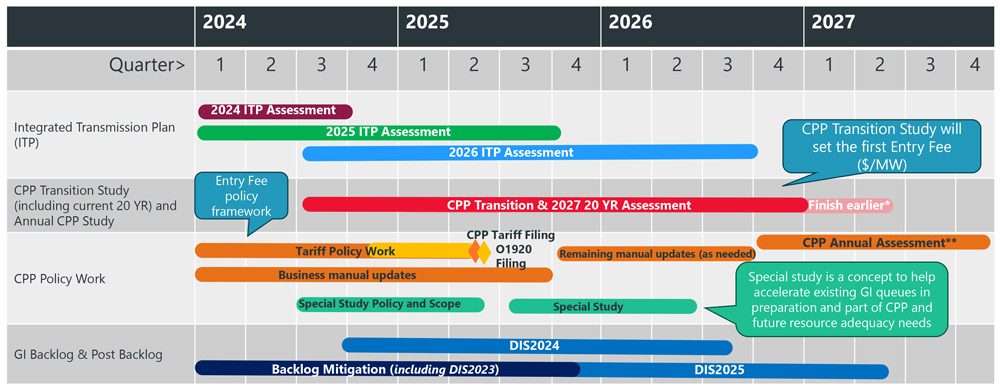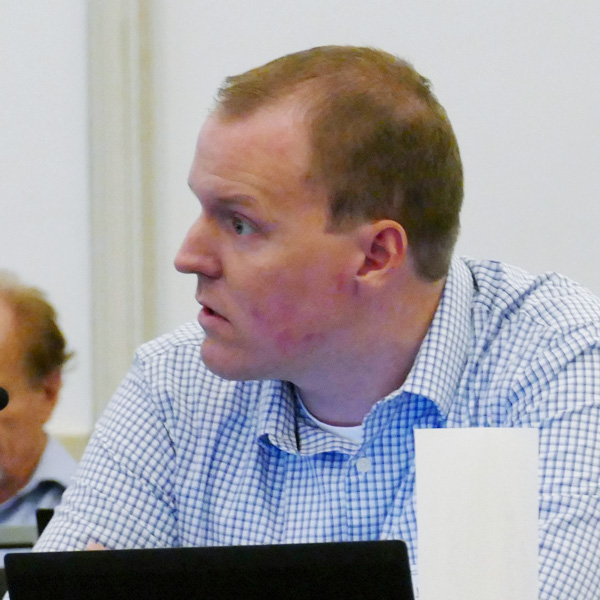Pennsylvania will use its $396.1 million Climate Pollution Reduction Grant (CPRG) on a statewide initiative to cut greenhouse gas emissions from industrial buildings through incentives for energy efficiency and emission-reduction technologies.
Montana’s plan for its $49.7 million CPRG will focus on improving forest management across the state, expanding urban and community forests, mitigating wildfires and coal seam fires, and reducing pollution from agriculture.
And in Connecticut, New Haven will get $9.4 million to build a networked geothermal system that will provide clean power and heat to Union Station, the city’s transit hub, with carbon-free electricity also going to a neighboring mixed-income housing development.
EPA on July 22 announced these and 22 other projects that have been selected to receive more than $4.3 billion in CPRG funds from the Inflation Reduction Act, all aimed at reducing emissions, promoting clean energy and creating jobs.
Announcing the grant awards at a concrete and asphalt plant in Pittsburgh, EPA Administrator Michael Regan said the federal dollars will “fund investment-ready projects targeting climate pollution from transportation, the electric power sector, commercial and residential buildings, industry, agriculture, natural lands, [and] waste and materials management. … These investments are going to change lives.”
Combined, the 25 projects could reduce U.S. GHG emissions by 971 MMT by 2050, which, according to EPA, is the equivalent of the emissions from the energy used by 5 million average U.S. homes per year for more than 25 years.
The IRA funds will “empower local ownership … and local solutions to help solve a global problem,” John Podesta, White House senior adviser on climate innovation and implementation, said during an advance press call July 19. “The climate crisis looks different in every community, from Colorado to Connecticut to Lincoln, Nebraska. More bike lanes and public transit may be the best way for one city to reduce emissions, and making a local steel plant more energy efficient might be the best path for another.”
Lincoln Mayor Leirion Gaylor Baird agreed. “Local initiatives, when combined with federal funding, can transform ideas into tangible solutions,” she said.
“Here in Lincoln, the planning phase of this grant program showed us that some of the greatest opportunities for emission reductions lie in enhancing the energy efficiency of homes and commercial buildings. Our analysis indicates that investing in energy efficiency and electrification could reduce Lincoln’s emissions by a whopping 77% from our baseline metrics by the year 2050.”
The money also will be used for “critical home repairs for low-income members of our community” as part of the city’s efficiency and electrification efforts, she said.
Lincoln’s programs are just one element of Nebraska’s plans for its $307 million in CPRG funding. The money also will go toward accelerating the adoption of climate-smart and precision agricultural practices and reducing agricultural waste from livestock.
Precision agriculture uses digital tools and automation to improve farming efficiency and crop yields.
EPA received nearly 300 applications for the grants, with funding requests totaling $33 billion, Regan said July 19. The 25 awardees were “the cream of the crop,” with projects offering “maximum penetration of greenhouse gas pollution reduction. But also, we wanted to be sure we saw the diversity across various industries, whether it be transportation, building, agriculture [or] the power sector.”
Community benefits and job creation were additional priorities in evaluating applications, he said. “We have a very stringent program. These recipients also have demonstrated that not only could they identify the pollution reduction targets, but they could put metrics in place to prove it.”
The CPRG funding contains an additional $300 million for emission-reduction projects submitted by tribes and territories, to be announced this year.
Asked if the grants announced July 22 could be affected by a change in administration, Regan said all the funds would be “obligated” to the awardees by early fall, once all legal and administrative requirements are met.
“We know these recipients are ready to receive these dollars and will be off to the races immediately,” he said.
State Climate Plans
The grant announcements are the second phase of the CPRG program, which began last year, when EPA awarded $250 million in noncompetitive IRA funds to help state, city and tribal governments develop climate plans. Individual grants ranged from $1 million to $3 million.
Plans were due March 1 for states and cities and April 1 for tribes and territories.
Forty-five states and dozens of cities and tribes ― covering 96% of the U.S. population ― now have plans in place, according to EPA. While five states ― Florida, Iowa, Kentucky, South Dakota and Wyoming ― did not submit plans, cities in those states did. Rapid City, S.D., and Cheyenne, Wyo., submitted plans, as did Des Moines, Cedar Rapids and Iowa City in Iowa.
Updated, comprehensive plans will be due around the middle of 2025, according to EPA.
The second-phase grants are intended to help a small group of states and cities implement those plans and provide models that other states, cities and businesses can replicate.
Pennsylvania Gov. Josh Shapiro, joining Regan in Pittsburgh, said the state’s $396.1 million CPRG is the second-largest federal grant in its history and will be used for its Reducing Industrial Sector Emissions in Pennsylvania (RISE-PA) program.
Administered by the state’s Department of Environmental Protection, RISE-PA will issue grants “to manufacturing companies across this commonwealth,” Shapiro said. “These grants can be used for … improving energy efficiency, reducing emissions, implementing carbon capture … and replacing equipment with electric power options,” such as swapping out coal-powered smelters used to make steel for electric smelters.
“I have always said we have got to reject the false choice between protecting our planet and protecting our jobs,” Shapiro said. “We can and we must do both.”
Multistate and Regional Projects
Other award winners included several multistate and regional projects.
Maine, New Hampshire, Connecticut, Massachusetts and Rhode Island are partnering on a New England Heat Pump Accelerator, which snagged $450 million, one of the largest grants announced. In states heavily dependent on winter heating oil, the project aims to install cold-climate air-source heat pumps, heat pump water heaters and ground-source heat pumps in 500,000 single-family and multiunit homes.
New Jersey, Connecticut, Delaware and Maryland have formed the Clean Corridor Coalition, which will receive $248.9 million to install electric charging stations for medium- and heavy-duty trucks along Interstate 95, a major East Coast freight route.
Maryland also is part of the Atlantic Conservation Coalition, joining Virginia and the Carolinas for a $421.2 million grant to be used to restore coastal habitats and peatlands, plant trees and improve forest management in Appalachia.
The state’s slice of the two projects will total about $130 million, according to a press release from Gov. Wes Moore (D).
“It isn’t enough to ask people to see themselves in the consequences of climate change — they also need to see themselves in the progress of climate action,” Moore said. “By moving in partnership with leaders at the local, state and federal levels, we are creating new green jobs, driving economic growth and building new pathways to prosperity for all, while protecting our planet.”


